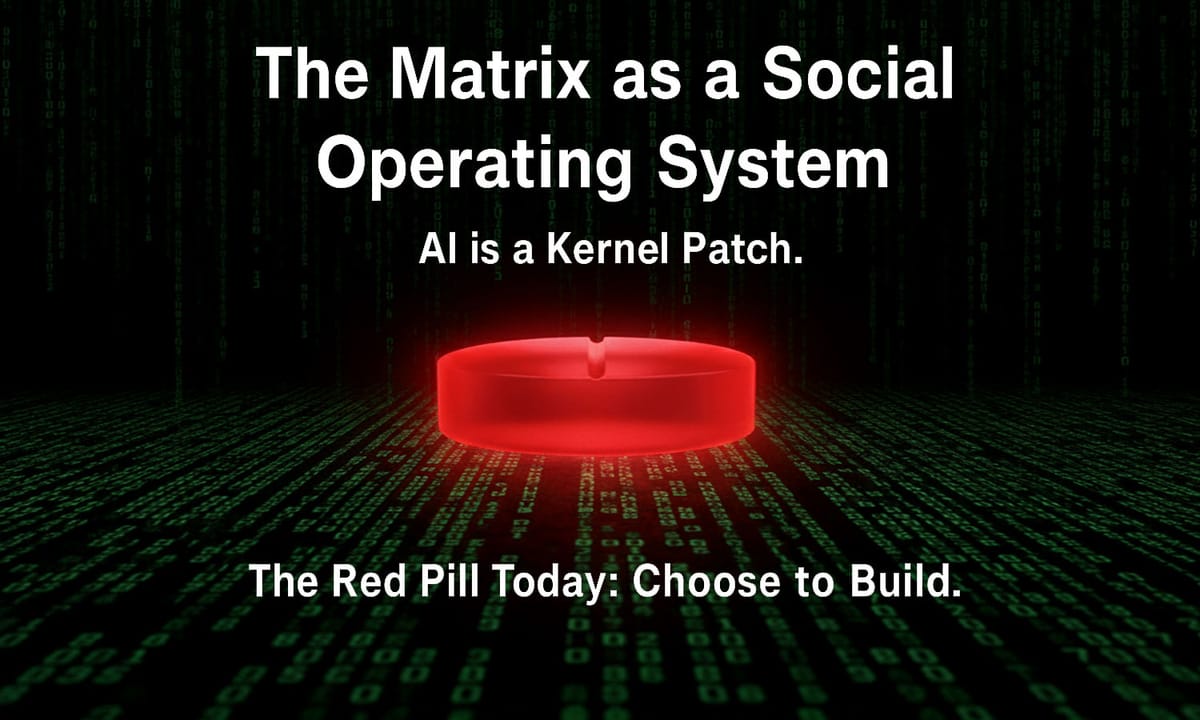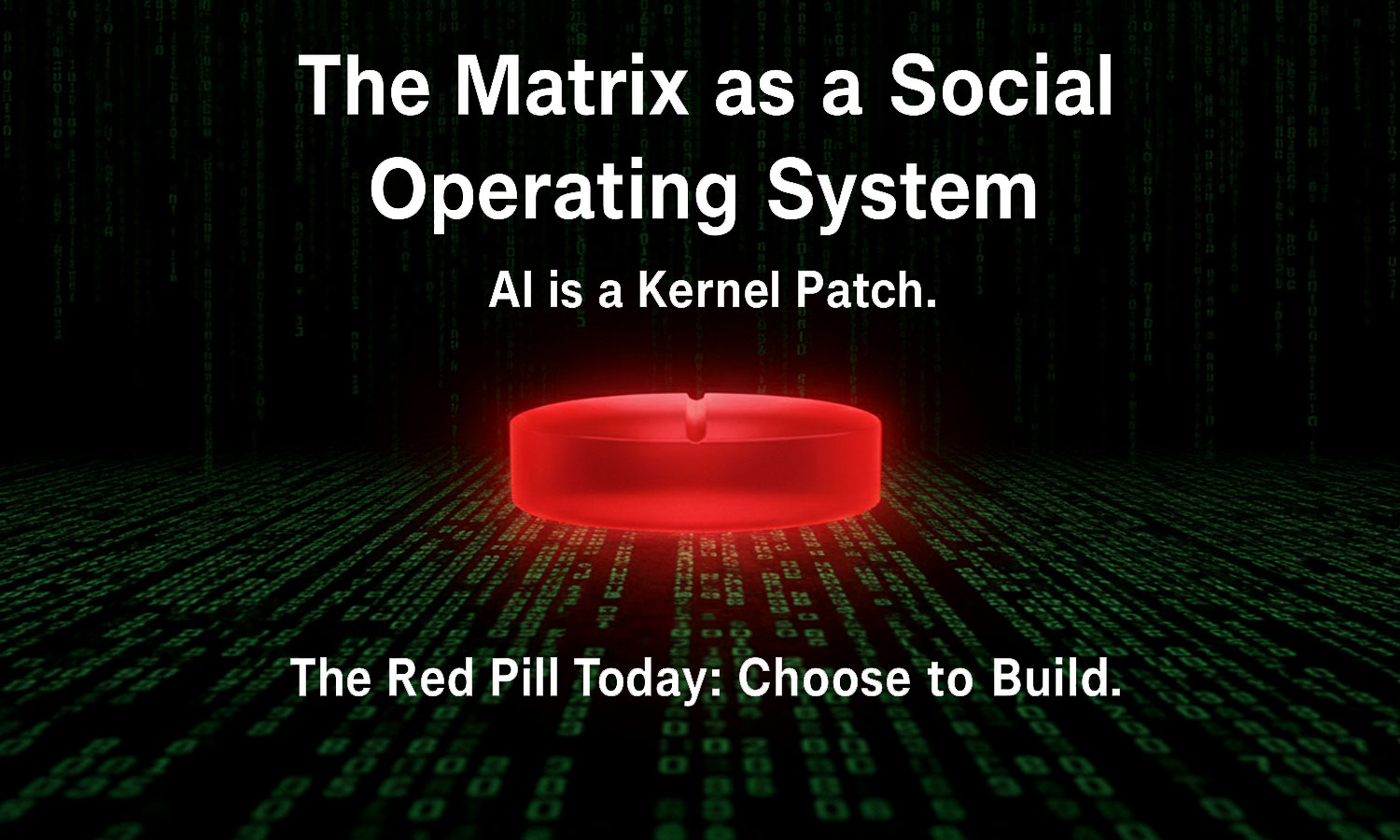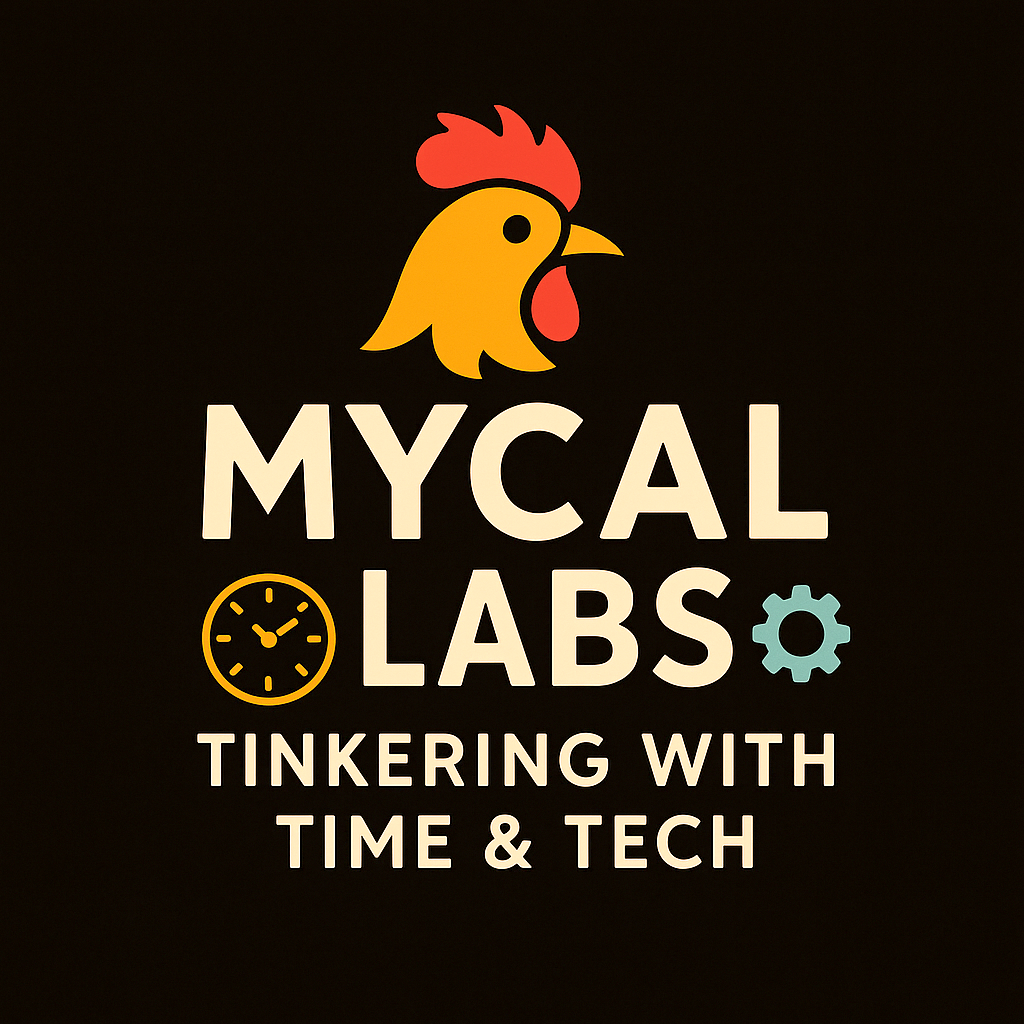The Matrix as a Social Operating System
The Matrix isn’t just a movie. It’s the invisible operating system of society — defaults, incentives, and scripts that run us. The cracks first appeared with the open Internet. Now AI is a kernel patch: it can tighten the cage or hand us the tools to build.

Tinkering with Time, Tech, and Culture #15

We talk about The Matrix as a movie, but the real Matrix is the invisible operating system running society: defaults, incentives, and protocols designed to keep us compliant, productive, and distracted.
Bootloader: School
The first install happens early. Punctuality, obedience, grades as proxies for worth. It’s not framed as control, but as preparation. You’re taught how to run inside the system.
Runtime: Media and Work
Media pushes endless updates. Work enforces the runtime. It isn’t a conspiracy, it’s scripts executing quietly in the background of daily life.
Morpheus’s warning still applies: when you tug on someone’s reality, they fight back. Not because they’re villains, but because you’re threatening the code that stabilizes their identity. The Matrix is self-defending; its agents are ordinary people attached to familiar illusions.
The Code Always Cracks
As the Architect admitted in Reloaded: “The first Matrix I designed was quite naturally perfect. It was a work of art. Flawless. Sublime. A triumph only equaled by its monumental failure.”
The real operating systems of society are the same: messy, full of cracks and contradictions. And it’s through those cracks that escape hatches appear.
The Old Patch: The Open Internet
The first crack appeared with the early Internet. Anyone could publish, link, remix. View source culture let ordinary people inspect the code and tinker with it. It wasn’t freedom itself, but it felt like it. For a brief window, anyone could fork culture without asking permission.
The New Patch: AI
Now the OS is mutating again. AI isn’t an app running inside the Matrix; it’s a kernel patch. It alters what can be automated, surveilled, generated, and distributed.
Used passively, AI deepens the Matrix. It replicates old control systems and multiplies them: propaganda at industrial scale, personalized distractions, behavior predicted before choices are made. It’s the Matrix writing its own agents in real time.
Used actively, AI offers leverage: the ability to bend code, generate new realities, maybe even fork the OS entirely. The same system that tightens the cage can also put the tools of authorship in your hands.
Users vs. Builders
The early Internet turned users into builders. Then the pendulum swung back: platforms optimized for consumption, not creation. The Matrix thrives on that passivity. It rewards scrolling, not making. It keeps you busy while it rewrites itself.
The difference is simple:
- Users live at the interface layer. They accept defaults, consume outputs.
- Builders drop to the code layer. They make, remix, and rewire.
Builders don’t just remix code — they generate new structures entirely. Creation is upstream of culture. When the system rewards consumption over generation, societies lose their forward motion. Fewer people start companies, launch movements, or make original art. The default wins. Not through oppression, but inertia.
AI is the first tool in decades that collapses that barrier. You don’t need credentials or permission. You can spin up code, art, writing, music, communities — instantly. The same tool that can narcotize can also empower.
Anyone can be a builder now.
The Red Pill Today
Awareness without action collapses into cynicism.
The real red pill isn’t just seeing the code — it’s rewriting it. Building instead of scrolling. Reclaiming authorship instead of accepting defaults.
The Matrix defends itself through comfort. The exit isn’t escape — it’s creation.
